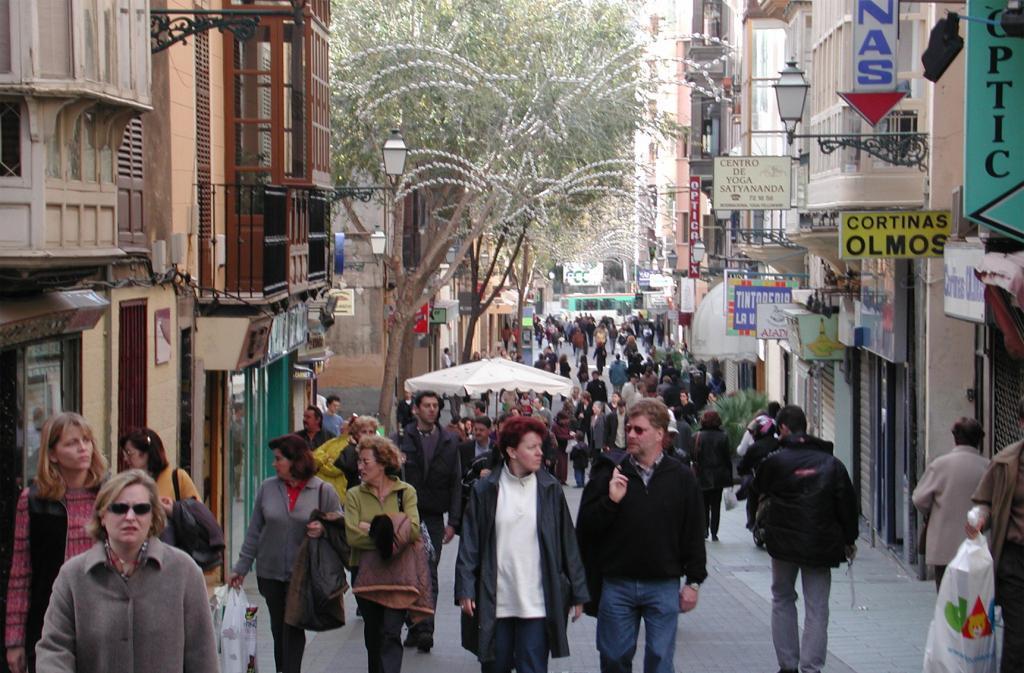There were decreases in both the British and German resident populations of the Balearics last year. In the case of the British, the number registered with town halls went down from 16,134 to 14,981. The German population fell from 20,451 to 19,209.
These declines are more marked when compared with 2007, before economic crisis broke out. There were then 19,803 British and 29,189 Germans, and the German community was the largest foreign resident population. It no longer is. There are now more Moroccans than any other foreign group, a total last year of 23,919. The number rose from 17,935 in 2007.
The overall effect of foreign resident immigration and emigration is that foreigners now represent 16.7% of the entire population of the islands (there were 2,000 fewer in 2017 than in 2016). The figure has been as high as 23%. The total population of the islands went up in 2017. The increase was to 1,115,999 from 1,107,220 in 2016. This rise is being attributed in part to the number of people who moved to the Balearics from other parts of Spain.
The largest foreign communities, in order, are now Moroccans, Germans, Italians (16,877), British, Romanian, Bulgarian, Argentine, French, Colombian and Ecuadorean. The South American population has also declined notably over the past decade. For example, in 2007 there were 11,129 Argentines and 13,100 Ecuadoreans. The figures are now 6,584 and 5,437 respectively. Other than the rise in the Moroccan community since 2007, the greatest have been Italians and Romanians. In 2007 there were 11,933 Italians.
The impact on municipalities of shifting foreign resident populations is perhaps most marked in Calvia. The 2017 total population of the municipality was 49,063. This was a decrease of 517. The foreign population went down more significantly - by 801 to 14,822. Palma had a higher reduction in foreign residents (832) but this was based on a much greater total foreign population of more than 60,000.
Different reasons have been advanced in explaining the drops in the British and German populations. Where the British are concerned, Brexit may be a factor, but then there are others - work, family, education, the cost of living. Another, albeit this kicked in some time ago, is the wealth tax declaration.
In Calvia, the general population trend, significantly influenced by the British and German communities, has been downward since 2015. The population exceeded 50,000 for the first time in 2008. In 2016 it dropped below 50,000, having decreased the previous year.
Another municipality where there has been a notable fall in the foreign population is Capdepera, which is popular with Germans. The decrease last year was 240, the third highest after Palma and Calvia.
There is as ever a potential caveat with these figures, and that is the number of foreign residents who aren't registered.


6 comments
To be able to write a comment, you have to be registered and logged in
I am wondering if the significant drop in South American population might be due to many obtaining Spanish nationality and no longer registering as foreigners.
Is nice to know that British have this bad opinion about of Eastern Europeans,next time when i see a Brit in Romania i will punch him in the face without hesitation,that way they can justified i deserve the etiquette of a Barbarian.
Let's stop mincing words everybody! Mortician, African, Sth American, Eastern Block scum have taken over our Beautiful Island Mallorca and Barcelona with drugs theft violence and sexual assaults. Consecutive Currupt Governments from Madrid to local have sat back and let this plague into Spain for Decades. Everyone I know is getting out.
We are British and left the island three years ago after 10 happy years. We had both worked full time all year round for nine of those years. Our town of sa pobla has an ever increasing Moroccan population most of which seemed to never work and the spanish were leaving to go elsewhere (England and Germany) to find jobs. Seems it’s going slowly the way of the uk importing people that down work and are a drain while the good resources are left to flee as it becomes unnafordable under ever increasing costs. Shame as was best place we ha e ever lived
My opinion is that the figures quoted could be misleading. They presumably include young adults, most of whom keep their parents nationality. The exception to this rule are those born to South American, North African and Eastern Europeans who become Spanish citizens if born here. Therefore I would reckon that the figure mentioned for Moroccans is way below the real figure of people who consider themselves to belong to that culture and are only Spanish, and therefore European, for administrative sake.
S. / Hace 1 minute I do know of many British people who have left, or been forced to leave , when their self employed businesses became bankrupt. Many caused from the greedy Hoteliers ALL INCLUSIVE policy. Several have left the Island, because of the fall in the pound, and their pensions can no longer support their living requirements. Perhaps this " Exodus " of many nationalities is down to the afore mentioned factors. Or, that the final " Brexit " regulations could impact badly on their lives. I left in 2000 after 10 great years on the Island, of which I adore.. Alas , I can only Holiday now, but on several times per. year..